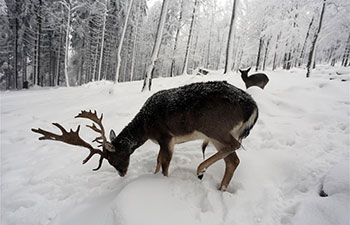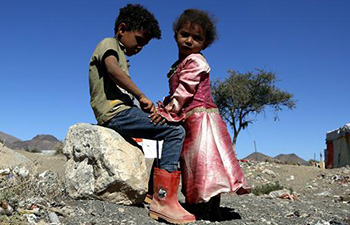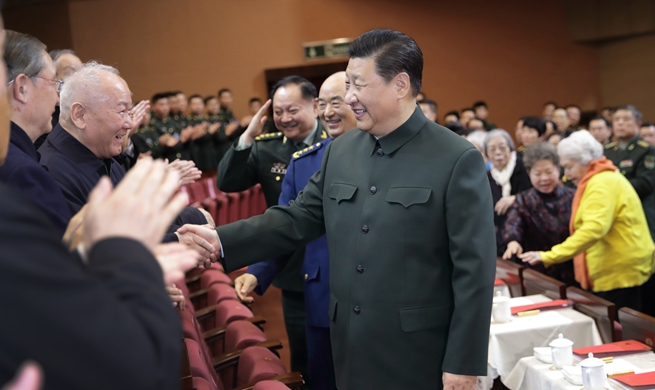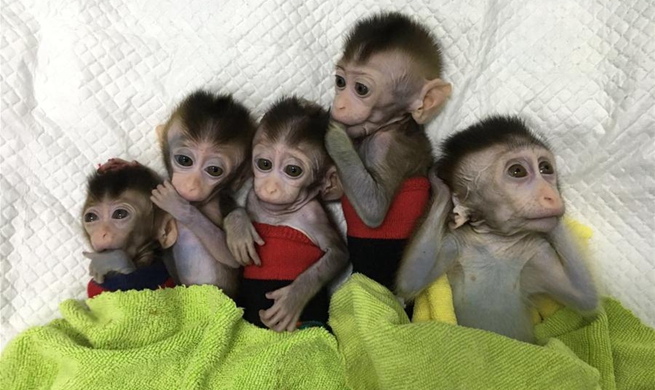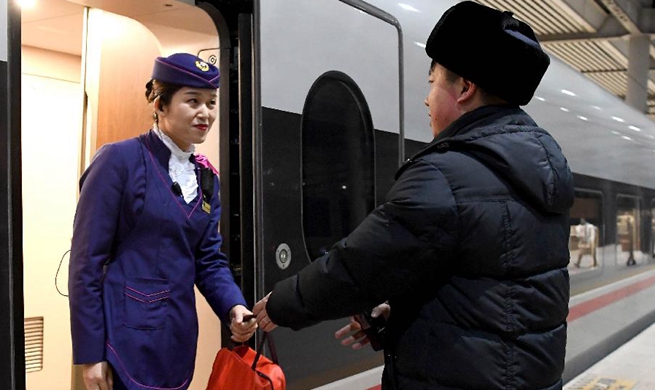BEIJING, Jan. 24 (Xinhua) -- The Chinese Academy of Sciences (CAS) has made many research advances in 2018, from the depths of the ocean, to far beyond the universe. Here are some of the highlights:
1. The CAS accomplished several key tasks for the Chang'e-4 mission. More than 20 critical instruments and materials crucial to Chang'e-4's safe landing, ongoing operation on the lunar surface and scientific exploration were developed.
2. CAS researchers cloned the world's first macaques from somatic cells by the method that made Dolly the sheep. It makes research with customizable populations of genetically uniform monkeys a possibility.
3. GV-971 drug brings hope for Alzheimer's treatment. Sodium oligomannate (GV-971), an innovative, orally administered drug for treating Alzheimer's disease, completed its phase III clinical trial, the last test before reaching the market in July 2018. It is the fruit of a 21-year research effort by a team led by the Ocean University of China, CAS and Green Valley Pharmaceutical Co., Ltd.
4. Majorana Bound States in iron-based superconductor was observed. A CAS research team observed Majorana bound states in an iron-based superconductor for the first time -- a major advance for building a future stable, scalable, and fault-tolerant topological quantum computer.
5. China Spallation Neutron Source (CSNS) and Wuhan P4 Laboratory were put into service. The CSNS is the country's first and world's fourth pulsed spallation neutron source, and passed national acceptance on Aug. 1, 2018. The Wuhan P4 Laboratory is China's first national biosafety level 4 laboratory, helping the country play a more active role in global public health.
6. The world's first artificial single-chromosome eukaryotic cell were created. Qin Zhongjun, a CAS molecular biologist, together with his collaborators, created the world's first eukaryotic cell containing only a single chromosome.
7. Rice molecular design breeding helps variety upgrade in China. "Zhongke 804," a new rice variety developed by CAS academician Li Jiayang showed excellent performance in 2018. It is outstanding in yield, blast resistance, rice quality, lodging resistance and head-milled rice rate.
8. Eight new satellites joined the Beidou network. Four pairs of Beidou Navigation System satellites manufactured by the CAS were launched into space in 2018. Each pair of satellites was launched from the Xichang Satellite Launch Center by one rocket into medium Earth orbit.
9. Multiple high-end scientific instruments were developed. A series of high-performance streak cameras were developed by the CAS, a breakthrough in key technologies such as the design of electronic optical systems and the production of high-performance photocathode.
10. The earliest human occupation of the Tibetan Plateau dates to 40,000 years ago. Archaeologists from the CAS reported the oldest and highest early Stone Age archaeological site yet known anywhere in the world in November 2018. The discovery of the Nwya Devu site has yielded the earliest record of human responses to high-altitude challenges and the eventual conquest of the extreme environment.
11. A cold atomic clock in the Tiangong-2 space lab. A cold atomic space clock, developed by the CAS, was launched into space with Tiangong-2. It is the first cold atomic clock in the world operating in orbit and carrying out scientific experiments.
12. Breakthroughs in stem cell and regenerative medicine technology and equipment. Regenerative medicine experts at the CAS and doctors at Nanjing Drum Tower Hospital used human umbilical cord mesenchyme stem cells to rehabilitate a woman's damaged ovary, enabling her to give birth to a healthy boy on Jan. 12, 2018.






